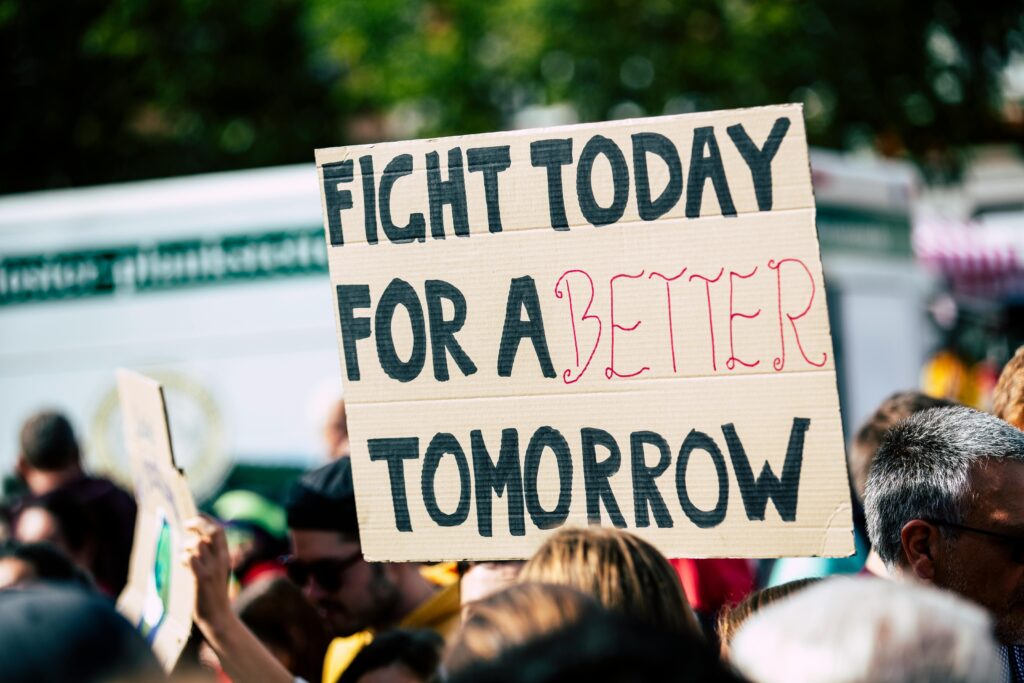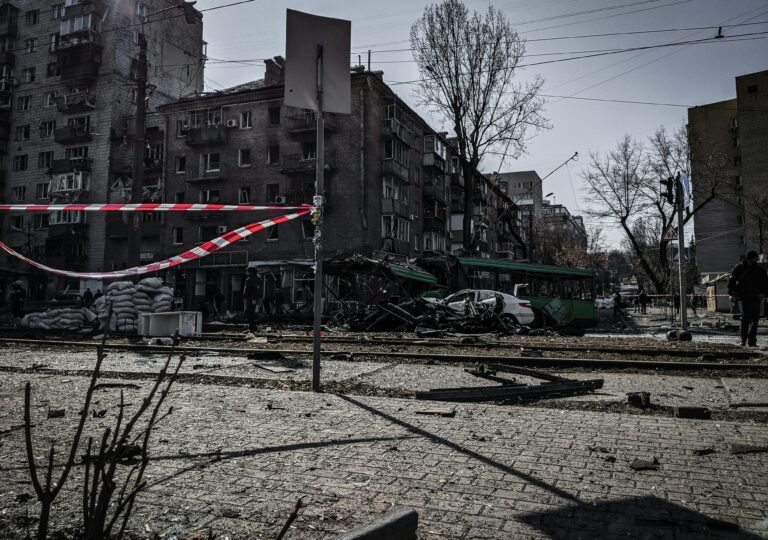
0
About
Let’s be real: those polite little walks down pre-approved streets mean exactly JACK to the powers that be. They’ve weaponized your decency against you — created a protest model so perfectly impotent that they encourage it! “Please, yes, gather in that fenced-off ‘free speech zone’ where we’ve already positioned cameras to make your crowd look small and unhinged!”
The ruling class has manufactured consent around protest itself — convincing you that standing in the designated protest area is enough to make a difference, when it’s precisely what they’ve designed to drain your energy while changing nothing. The same ghouls who authorize tear gas for stepping off the sidewalk will proudly tell their grandchildren they supported your right to march in circles holding cardboard!
What they fear — what makes them truly nervous — is when protests evolve beyond predictable theater into strategic disruption with tangible demands and actual consequences. This isn’t about violence. It’s about effectiveness. It’s about understanding that power concedes nothing without real pressure.
TACTICAL BREAKDOWN
The effective protest rejects performative marching for strategic action that creates actual leverage. This requires:
- Specific, achievable demands with deadlines
- Targeting decision-makers’ stability and comfort, not their attention
- Long-term infrastructure beyond single events
- Media strategy that controls the narrative
- Tactical diversity that prevents easy countermeasures
IMPLEMENTATION GUIDE
PHASE 1: PRE-PROTEST GROUNDWORK
Step 1: Target Selection & Research
Don’t protest “inequality” or “injustice” — protest something specific with actionable demands. Research your target exhaustively. If it’s a corporation, learn their board meeting schedule, major investors, and upcoming product launches. If it’s government, identify the specific decision-makers, their political vulnerabilities, upcoming votes, and prior positions. Map their physical spaces — not just headquarters but favorite restaurants and social clubs. Knowledge is leverage. The more uncomfortable they feel, the more likely they’ll negotiate to make you go away.
Step 2: Build The Coalition
Conventional wisdom says “get as many groups as possible” — that’s wrong. Better to have five committed organizations with aligned goals than fifty with contradictory agendas. Meet in person, establish clear decision-making protocols, and create a binding document for how demands can be modified. Develop a shared security culture that assumes infiltration (because there will be). Establish an agreement framework for what tactics are acceptable to all coalition members, and what actions might require separate affinity groups.
Step 3: Infrastructure Development
Build systems that outlast the adrenaline rush. Create a secure communication structure using Signal groups with clear protocols. Establish a legal support network before you need it, with clear roles and contact procedures. Develop a bail fund infrastructure and train street medics. Create multiple media teams — both social media and traditional press liaisons who stay on message. Establish community care networks for childcare, food preparation, and material support that make sustained action possible.
PHASE 2: STRATEGIC ACTION
Step 1: Non-Symbolic Disruption
Forget marching past empty buildings on weekends. Target choke points that actually matter to decision-makers: investor meetings, transportation hubs serving their headquarters, supply chain weak points, or luxury spaces they frequent. Disruption should impact their ability to continue business as usual. Remember: a hundred people at a CEO’s country club fundraiser creates more pressure than ten thousand marching downtown on Saturday. Uncomfortable proximity to power is more effective than comfortable distance.
Step 2: Escalation Ladders
Develop a clear escalation strategy that increases pressure when demands aren’t met. Start with actions that demonstrate popular support, then systematically target reputation, then business relationships, then financial stability. Each escalation should be proportional and clearly communicated: “If demand X isn’t met by this date, we will begin phase Y.” This creates deadline pressure while demonstrating seriousness and organizational capacity.
Step 3: Narrative Control
Reject media framing that focuses on protest size, violence, or colorful signs. Control your narrative through disciplined messaging that constantly returns to specific demands and the human impact of current policies. Train articulate spokespeople who never react defensively to provocative questions. Create your own media documentation teams who capture footage that counters establishment narratives. Force the conversation back to your demands, not your tactics.
PHASE 3: SUSTAINED PRESSURE
Step 1: Rotation Systems
Develop systems that allow people to participate sustainably. Create rotation schedules for different roles, from frontline actions to support functions. Build in recovery periods to prevent burnout. Organize participants into affinity groups that take turns leading different actions so no single group becomes depleted. Create structures that allow varying levels of commitment and risk, enabling broader participation across different comfort levels.
Step 2: Counter-Repression Strategies
Prepare for inevitable repression by developing both preventive and responsive measures. Train participants in security culture basics, including device management and interaction with authorities. Create rapid response teams for arrests and targeting. Establish a regular know-your-rights training program. Develop protocols for supporting targeted individuals, including financial, legal, and emotional support. Remember that movement resilience against repression is as important as the actions themselves.
Step 3: Victory Reinforcement
When you win concessions (even partial ones), document and celebrate them concretely to maintain momentum. Create clear timelines for monitoring implementation and be prepared to remobilize if agreements are violated. Use victories to build capacity for the next campaign. Develop institutional memory through documentation that helps future organizers learn from your experience without repeating mistakes.
RESOURCE DIRECTORY
Strategic Planning Tools:
- Beautiful Trouble Tactical Framework (beautifultrouble.org)
- Momentum Community Action Planning Guide (momentumcommunity.org)
- Blueprints for Change Digital Campaign Guides (blueprintsforchange.org)
Security & Legal Support:
- Electronic Frontier Foundation Surveillance Self-Defense (ssd.eff.org)
- Just Futures Law Organizing Guide (justfutureslaw.org)
- National Lawyers Guild Mass Defense Resources (nlg.org/massdefense)
Movement Infrastructure:
- Mutual Aid Disaster Relief Network Building Guides (mutualaiddisasterrelief.org)
- Ayni Institute Movement Support Infrastructure (ayni.institute)
EXAMPLES FROM THE FIELD
The Standing Rock pipeline protests created physical obstruction at construction sites while developing a sophisticated camp infrastructure that sustained the movement for months. Their rotation system allowed people to participate and then return to jobs and families while maintaining continuous presence.
The Puerto Rican Summer 2019 protests against government corruption focused relentlessly on a single, clear demand (the governor’s resignation) while employing a diversity of tactics from motorcycle caravans to massive street demonstrations. By maintaining pressure on multiple fronts simultaneously, they created a sense of inevitable victory.
The successful UK anti-fracking campaigns combined sustained protest camps with highly targeted actions against specific companies in the supply chain, eventually forcing many contractors to withdraw from projects entirely rather than face continuous business disruption.
TACTICAL VARIATIONS
For Limited Resources: Focus on high-leverage flash actions rather than sustained occupation. Identify key decision-maker events and mobilize smaller groups to create targeted disruption at multiple sites simultaneously, forcing authorities to spread thin rather than concentrate on a single location.
For Hostile Media Environments: Deploy “Reverse Surveillance” teams that document authority misconduct while cultivating relationships with specific journalists rather than outlets. Create compelling personal narrative content that bypasses traditional media entirely through targeted digital campaigns.
For High-Repression Contexts: Utilize distributed action models where small affinity groups coordinate timing but operate independently, making it impossible to decapitate leadership. Employ low-visibility resistance tactics like targeted consumer actions, work slowdowns, and strategic service withdrawals that are harder to criminalize than public demonstrations.
COUNTERING OPPOSITION
Against Criminalization: Establish clear defensive strategies that make repression backfire. Document all interactions with authorities. Create rapid response media teams ready to reframe any arrests as political persecution. Develop legal observer programs and maintain attorney relationships before they’re needed.
Against Infiltration: Operate on the assumption that groups are infiltrated. Focus on building ethics and values rather than planning specific actions in large groups. Use the “need to know” principle for sensitive information. Verify new members through trusted relationships rather than political credentials.
Against Narrative Hijacking: Train all participants in message discipline. Develop clear talking points that continually redirect to core demands. Create systems to manage provocateurs who attempt to discredit the movement through property destruction or aggression toward authorities.
THE NEXT BATTLEFIELD
The era of symbolic protest is dead, replaced by strategic campaigns that create actual leverage against specific targets. As repression increases, movements are developing more sophisticated infrastructure for long-term sustainability. The most effective actions combine visible mass mobilization with invisible pressure on decision-makers’ personal, social, and financial relationships.
Power doesn’t yield because you ask nicely with a creative sign. It yields when continuing its current course becomes more painful than giving you what you want. Every effective protest strategy in history has understood this fundamental reality.
RELATED ACTION ITEMS
- Developing Digital Security Protocols for Activists
- Creating Mutual Aid Networks for Movement Sustainability
- Building Rapid Response Media Teams
- Strategic Corporate Research Methodology
- Tactical Communication Systems for Direct Action


